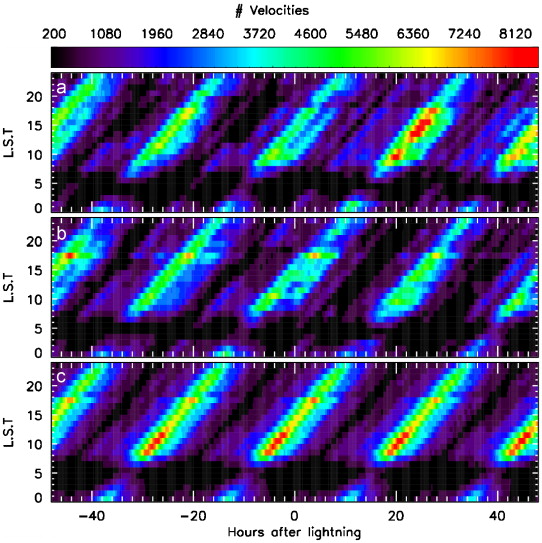
**Understanding Infrasound: The Relentless Waves Surrounding and Within Us**
When Krakatoa erupted in Indonesia in 1883, its monumental explosion released something that surpassed human comprehension – infrasound waves that journeyed around the globe. These ultra-low-frequency sound waves, imperceptible to human ears at that time, traversed the Earth multiple times and were recorded on barometers in London, over 10,000 kilometers away. This event signaled the beginning of infrasound research, unlocking a compelling field of study that continues to unveil hidden elements of our world.
### **What is Infrasound?**
Infrasound pertains to acoustic waves with frequencies lower than 20 hertz (Hz), beneath the limits of human hearing in normal conditions. Unlike sounds with higher frequencies that tend to dissipate fairly quickly, infrasound is characterized by exceptionally long wavelengths that enable it to cover extensive distances through the Earth’s atmosphere. It can easily penetrate physical barriers like buildings and mountains, earning it the label “unstoppable sound waves.”
Infrasound can be found all around us, stemming from both natural disasters and human-made sources. Its origins include volcanic eruptions, earthquakes, and meteor impacts, as well as subtler occurrences like auroras, lightning strikes, and significant storms. On a human scale, wind turbines, industrial machinery, and heavy traffic also contribute to the generation of these mysterious waves.
### **The Unique Properties of Infrasound**
Infrasound’s most remarkable feature is its capacity to persist and travel nearly indefinitely. “In contrast to audible sounds, which weaken as they disperse, infrasound moves through the atmosphere with exceptional efficiency,” states François Coulouvrat, an acoustics specialist at the Jean le Rond d’Alembert Institute. With its long wavelengths, infrasound bends around barriers and conforms to the Earth’s curvature, becoming detectable thousands – or even tens of thousands – of kilometers away from its origin.
Global monitoring networks have been set up to systematically track infrasound activity. Originally created to enforce treaties aimed at preventing nuclear testing, these stations have since been adapted for investigating natural events such as volcanic activity and meteorite impacts, as well as forecasting extreme atmospheric phenomena like tsunamis.
### **Investigating the Human Impact of Infrasound**
Although infrasound may be “below the radar” of human perception, research indicates that it can influence the body and mind in subtle, sometimes unforeseen ways. In an effort to understand how individuals perceive low-frequency waves, researchers at France’s Laboratory of Mechanics and Acoustics have developed a cutting-edge infrasound chamber. This specialized facility, encompassing 40 cubic meters and featuring 72 high-powered loudspeakers, is capable of producing infrasound at frequencies as low as 5 Hz and decibel levels reaching 100 dB.
The outcomes from this facility have been unexpectedly revealing. While conventional science has acknowledged that human hearing is limited to frequencies between 20 Hz and 20,000 Hz, emerging evidence suggests that humans *can* perceive lower frequencies at sufficient intensities. Rather than hearing these sounds as tones, most individuals perceive them as physical sensations – gentle vibrations or a rhythmic pulsing within their bodies.
The implications of this research are significant, especially for those living near sources of infrasound such as wind farms and industrial sites. “Noise regulations typically focus on sounds within the audible range,” remarks David Ecotière, Deputy Director of the Environmental Acoustics research unit. “Yet many reports of noise pollution seem to concern frequencies below those typically measured by A-weighted decibels.” Such measurement frameworks may overlook the disruptive impacts of infrasound, especially regarding sleep disturbance and stress levels.
### **The Mysterious Low-Frequency Hums**
One particularly enigmatic area of infrasound research is the continuous low-frequency “hums” reported by certain individuals. Often experienced indoors or at night when ambient noise is reduced, these sounds seem to affect only a small group of people, leaving others perplexed. ENT experts investigating these claims are increasingly turning to acousticians to discover whether subtle infrasound waves might be responsible.
Paul Avan, a noted audiologist, explains: “In many instances, individuals reporting these hums are detecting infrasound that conventional soundproofing cannot block. This highlights the unique characteristics of these waves and their significant penetration into human environments.”
### **Applications in Science and Society**
In addition to their potential health implications, infrasound waves serve as a vital resource for scientific inquiry. The global infrasound monitoring network, consisting of 60 stations worldwide, delivers essential data for atmospheric modeling and disaster readiness. For example, volcanic eruptions produce identifiable infrasound “fingerprints” that researchers can analyze to determine eruption types and magnitudes. This information can enhance alerts for communities at risk from ash clouds or pyroclastic flows.
By understanding how infrasound reflects and refracts during its journey, scientists also employ these waves to map atmospheric conditions. As